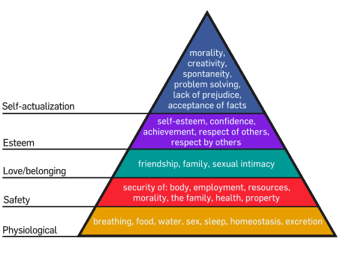Anyone can become a publisher on the Internet. The ever-expanding publisher pool also has a finite-attention target. Read the blog to know how content goes viral.
Back in 1997, Sabeer Bhatia and Jack Smith, founders of Hotmail, were looking for fast and economical ways to exponentially accelerate the growth of their customer base.
The traditional marketing route was going to be expensive, so they decided to try something unconventional for that time.
They added a signature to the bottom of every email people sent using their service. It read, “Get your Private, Free E-mail from MSN Hotmail at www.hotmail.com”, and with just that one line in the footer, every email was recruiting more users for them.
When people read the ad, they automatically associated it with their friend, who was not only using Hotmail but was also recommending it. On top of that, it was free.
This simple strategy got Hotmail 12 million new subscribers within 18 months! It’s worth noting that the entire Internet had about 20 million users back then.
That was the beginning of what we know now as a successful viral campaign.
What exactly is Viral content?
“Word of mouth marketing on steroids”.
Any Internet user can become a publisher. But, it also means that the target of this ever-expanding publisher pool is a variable that is finite-attention.
With thousands upon thousands of “worthy” content being released every second, Internet users are constantly becoming more and more selective about utilizing the share button. But, people do love to share. This is the driving force behind why the viral effect exists.
The reasons why people share content are different. As a publisher, once you provide the users with right motivation and incentive to share- They. Will. Share. (Tweet this)
Understanding the human psyche when it comes to sharing content is very important. Why do people share in the first place? Before we look into what type of content makes the perfect candidate to go viral, let’s work backwards here and explore the reasons behind sharing.
Maslow’s Hierarchy of Needs
To understand why people share, we need to first examine what motivates them to do so, and Maslow’s Hierarchy of Needs helps us realize that a person’s immediate need, to some extent, can very much act as a motivation to complete certain actions.

Maslow’s hierarchy states that people are motivated by unsatisfied needs. When a need is fulfilled, it fails to motivate us. A person’s growth can be divided into 5 stages, each comprised of different sets of needs.
As seen above, the lower order needs focus on physical and emotional well being, and the higher order needs focus on personal development and self fulfillment. Each stage is interdependent on each other, which, in this case, means that for a person to be motivated by, let’s say, stage 3 needs, they would first have to satisfy Stage 1 and 2.
Stages 3 and up, that deal with more psychological and interpersonal needs, are what motivates us to share. For example, take the need of love, belonging and acceptance that every person desires from either their immediate social spheres like friends, families, partners, or from their professional acquaintances. This need is what motivates people to participate in a “group” mentality and listen to their friend’s recommendations. A person motivated by this need will not only read the link shared by their friends, but also share it themselves as well.
If most of your target demographic are motivated by need, one method to increase shares of your piece is to add a social sharing widget that shows the number of people who have shared your content. It is true that a “a crowd draws a crowd” and visitors would be more inclined to share your content if they see other people have already done so already.
Stage 4 deals with esteem. For these people, self respect, recognition and value means a lot. They want their opinions to be heard and recognized. There are two versions of esteem needs, that Maslow talks about. One is the need of respect from others in form of recognition, reward, fame or attention, and the second is self respect in form of independence, freedom, self-confidence, strength and mastery.
That said, as with many other theories, Maslow’s hierarchy has its own set of limitations. Some might argue that this hierarchy only applies to western societies because in some Asian cultures, for example, status is more important than the basic needs.
Another limitation comes in the form of starving artists whose passion for their craft or goals surmounts their basic needs.
The Power of Social Validation
Humans are born with an innate desire to belong. People love groups. They especially love to be part of a group who share a popular opinion. The more the people love an idea, opinion or a product, the more we find that idea appealing to our minds as well. In other words, most people are followers. We do this because right from our childhood , the idea that the more we comply with the social norms the less likely we are to make a mistake, is engraved in our minds.
Dr. Susan Weinschenk puts it perfectly when she says, “When we are uncertain about what to do, we will look to other people to guide us. “
This phenomenon occurs everywhere. For example, purchasing a product that has the most reviews online, or simply liking something because many other people admire it.
Accept it or not, but the truth is that many of our audience members base their decisions on popular opinions.
A study conducted by NYT looked at the persuasive power of likes.
This study was conducted by manipulating the voting system in the comment section of an unnamed website that allows people to share links to news articles. Along with commenting on the articles, the readers can also up vote or down vote other comments. The final rating on a comment is calculated by subtracting the down votes from the up votes.
The experiment spanned across 5 months through which the researchers would manipulate the ratings of random comments by giving a fake thumbs or thumbs down. Right after a comment was made, it was given a random positive or negative rating and in case of the control group- no change was made.
What they found was that, regardless of how well the content was, the first person who saw the comment was 32% more likely to up vote it if it already had a like. After 5 months, it was found that the comments with artificial rating had a 25 % higher score than the ones in control group.
What do Our Sharers Look Like?
The New York Times Customer Insight Group conducted a study that focused on uncovering the truth about the motivations of sharing, the 6 sharing personas, cycle of sharing and more. This study was conducted across 3 phases-
Phase I- In person interviews
Phase II- Immersion/Deprivation
Phase III- Survey of 2500 online sharers
Here is what they found.
People share:
- to ameliorate other people’s lives through rich and entertaining content.
- to fortify their own image in front of others by sharing content that aligns with their own personas.
- to nourish relationships and to stay connected with people with same interests.
- because it makes them feel more involved by allowing them to contribute important content.
- to inform others of important causes or brands they love and support.
Here are some stats from the study:
- 94% carefully think about the usefulness of the content to the recipient before actually sharing it.
- 68% share to give people a better idea of who they are and what is truly important to them.
- 78% share because it helps them stay connected with people who they may otherwise not keep in touch with.
- 73% share to connect with people who have similar interests as them.
- 69% share to feel more involved.
- 84% share to support a cause or issue.
The Six Sharing Personalities
- The Altruits-
These are people who share to genuinely help and stay connected. They are reliable sources and their preferred sharing medium is email.
- The Careerists-
They share to network and exchange intelligent and valuable business related content. Their preferred sharing medium is professional and career oriented social networking website like LINKEDIN.
- The Hipsters-
These are are creative people who share content that defines their true personality. They often share popular and cutting edge content. Email is the least preferred sharing medium for them.
- The Boomerangs-
These are people who share to seek reaction and validation from others. Often times these content are of the controversial kind. Sharing gives them a sense of empowerment. Preferred sharing platform is Facebook and Twitter.
- The Connectors-
The people in this group share to connect with their friends. Content shared by them are often creative and thoughtful. Preferred sharing platform for them is email and Facebook.
- The Selectives-
They are people who are resourceful and careful about what they share about whom. They only share information with specific groups of people or a person who they know will benefit from the info. Their preferred sharing medium is email.
Instilling the sharing motivation
Shift your focus from your brand to your audience, and by producing content that resonates with the people’s motivation to share with each other. The content should connect to their sense of humor. Simple things get shared more.
Also, audience that trusts the content producer is most likely to share.
Take the example of a book named, “The Cuckoo’s Calling”, a debut mystery novel by Robert Galbraith, a former British Army officer. It received good reviews but as far as sales were concerned, they were not that high- 1,500 copies- even though the readers described it using colorful adverbs such as compelling and scintillating.
Surprisingly, it was later found that the book was not written by any new author, an army officer or even a man. It was actually written by the world renowned J.K Rowling. Right after this news was unmasked, the book jumped up to the top of the best-seller list.
What type of content gets shared the most?
It seems to be common knowledge that bad news sells more. But is it true when it comes to sharing? The classic rule of broadcast and journalism says that news of murder, war, earthquakes, death etc brings in more eyeballs. Well, according to the social psychologist Jonah Berger, the opposite is true when it comes to sharing. The mass media only cares about getting your attention. They don’t care about how you feel. So the bad news rule works for them. But when it comes to sharing with friends and families, the sharer cares a lot for about their feelings and how they react. You don’t want them to remember you as a downer or the bearer of the bad news.
University of Pennsylvania researchers Jonah Berger and Katherine A. Milkman conducted a study to find what kind of articles where shared the most. Their subject for this experiment was the New York Times.
What they found was that articles that kindled the feelings of awe and curiosity, such as the one’s in the science section were more likely to be shared than articles that aroused the feelings of sadness.
When the researchers analyzed 3000 articles from August 2008 to February 2009, that had gone viral, they found that articles that aroused emotions, whether it be negative or positive, were shared BUT positive themed articles were always shared more than negatively themed ones.
Another poll conducted by Ipsos, across 18,150 participants, found that 43% of the participants had shared pictures in the past month. 26% shared links to articles, 25% shared product recommendations, and 26% shared their “opinion” and status updates of their recent activities.
Verdict? Pictures Get The Most Shares.
Who does the most sharing?
Ipos also analyzed the demographics of those who are most likely to share. What they found was that people under the age of 35 were the most like to share (81%), compared to those between 35 to 49 (69%) and 50 to 64 (55%).
They found found that women (74%) were more likely to share than men (69%). Along with that, those with a higher education and high income levels were more likely to share as well.
Ipsos conducted another study that found that 61% of sharers were more inclined to share interesting content, 43% shared informative content and 43% shared something funny. There were 12,420 participants in this study out of which 37% indicated that they shared content to let others know who they really are.
Here is what you need to do:
- Market Research. Learn as much as you can about your audience. Where are they from, age, gender, income etc. Having a general idea of their demographics will help you to pin down their needs, motivations and trigger points.
- Video and pictures are the most popular content formats. In fact, you will now find that popular news sites are accompanying their articles with video. Other content that people love to share are memea and infographics.
- Lists! People love lists type articles. There is something about lists that ignites curiosity in the minds of the readers and persuades them to click the title and read through the article. This is especially true if it is a countdown type article.
- Don’t be scared of long content. A transcription of letter by Neil Gaiman titled, “Why Our Future Depends On Libraries, Reading and Daydreaming” got shared 230,983 times on Facebook and 7,848 times on twitter. This piece was more than 3000 words long. Long articles drive many engaging comments which in turn increases the likelihood of sharing.
- Share research and case studies. Adding a scientific spin to your content is a fantastic way to increase your reputation while adding credibility to your brand or website. Also, by having your article scientifically backed, your audience will find your content more reliable and valid. If you do it correctly, you should be able to ignite that emotion of awe that seem to get people sharing.
- Be creative. Be Original. Be Unique. Most of the times, the stuff we want to say has already been said a thousand times before. Don’t be part of that crowd. Think and brainstorm ways to make YOUR DELIVERY unique from everyone else. Craft the old news with a twist so that it can get people talking.
- Awe, Anger, Anxiety, Fear, Joy, Lust and Surprise. You want your content to instigate one or few of these high arousal emotions to get a reaction out of the people. Remember the Blendtec ad campaign called “Will it blend” where Blendtec is shown to do its magic on an iPhone (lost), Solar Lamp and even a skeleton? Their youtube videos have garnered more than 234, 579,000 views bringing their brand immense popularity. Same goes with other viral videos like Numa numa, or Rebecca Black’s Friday.
- Ask people to share. Having a call to action towards the end of your content is very important. Make your call to action in such a way where the user realizes that have just encountered an amazing piece that their friends will love to read and thank them for.
- Treat each of your content as a possible candidate for going viral. The more strong contenders you have, the more likely would be for your content to go viral. Once finished reading, your reader should feel like they have been given something of great value. People love to show off. Especially if it will help them gain respect and recognition. If your content can do that, it will definitely be shared.
Want your next content to go viral?
Here is what you need to do. Work backwards. Conduct a market research. Thoroughly study your audience. Analyze your stats. Identify their needs. Look at which of your previous posts garnered the most shares. Read the comments. Often times, with a little decoding, you will find what the readers are looking for.
Next craft your piece. Be as creative as you can. Add elements of storytelling. Make sure your content has a beginning, middle and an ending. Add characters and personalities. Make sure you are solving some kind of problem. Spend the most of your time on crafting a compelling headline. (Tweet this) That’s the most important part.
Next, plant the seed. You want to get your content to the right mediums. It needs that initial marketing push to get rolling. You can spread the seed across all the major social networking sites, reddit or relevant blogs.
Remember, when we least expect it, something big happens. Most content that goes viral are crafted with the aim of helping or bringing some kind of value to people in an original way. Going viral is often found to be a side effect – a good one at that!
Lastly, I can’t end without saying this: Do share this article if you found it to be helpful 🙂 and feel free to ask any questions in the comment box below.
FAQs
The term viral content refers to online content which has gained a high level of exposure through social media networks, news websites, aggregators, email newsletters, and search engines.
The term viral content simply refers to content that is widely shared across the internet within a few hours. Basically, it’s content that becomes very popular very quickly. Whether it is a meme or a news article, any type of content can go viral.
A psychological process in which one or more people conform to the actions of others within a group is called social validation.
Ankit is a co-founder @ AdPushup (a tool which helps online publishers optimize ad revenues) and loves online marketing & growth hacking.




